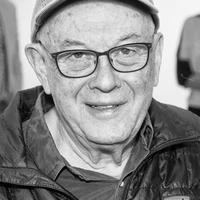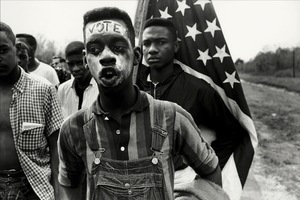Bruce Davidson

Nato a Chicago nel 1933, Bruce Davidson ha vinto il primo premio del concorso nazionale Kodak per le scuole superiori del 1949. Si è laureato all'Università di Yale nel 1955 e il suo dottorato di ricerca su uno sguardo dietro le quinte di una squadra di calcio americana è stato pubblicato dalla rivista Life. Si trasferisce poi a Parigi per due anni per il servizio militare, dove realizza il suo primo soggetto: La vedova di Montmartre, che presenta a Henri Cartier-Bresson. Nello stesso periodo ottiene un posto da freelance presso Life.
Nel 1958 entra a far parte dell'agenzia Magnum e realizza un servizio su un clown solitario in un circo itinerante: Il nano.
Nel 1961 viene assunto da Vogue come fotografo di moda, dove rimane per tre anni. Nello stesso anno inizia a lavorare sulla lotta dei neri d'America per l'uguaglianza dei diritti civili e l'anno successivo riceve la borsa di studio Guggenheim per estendere i suoi studi a New York, Chicago e al Sud americano. Queste immagini sono ora raccolte nella raccolta Time for Change, pubblicata nel 2002. Il tema è stato anche oggetto di una mostra alla Fondazione Henri Cartier-Bresson nel 2007.
Ho deciso fin dall'inizio di non comprare un teleobiettivo, di non essere mai a più di un metro e mezzo dai manifestanti e dai poliziotti che fotografavo per strada. Volevo essere quasi nella foto(...)“”Ero vicino e veloce. Dovevo esserlo per non essere arrestato. Per tutto il tempo in cui ho assistito a quella lotta, ho sentito di essere parte di qualcosa, non di esserne escluso. Questo è sempre stato l'istinto e credo che mi sia servito.
